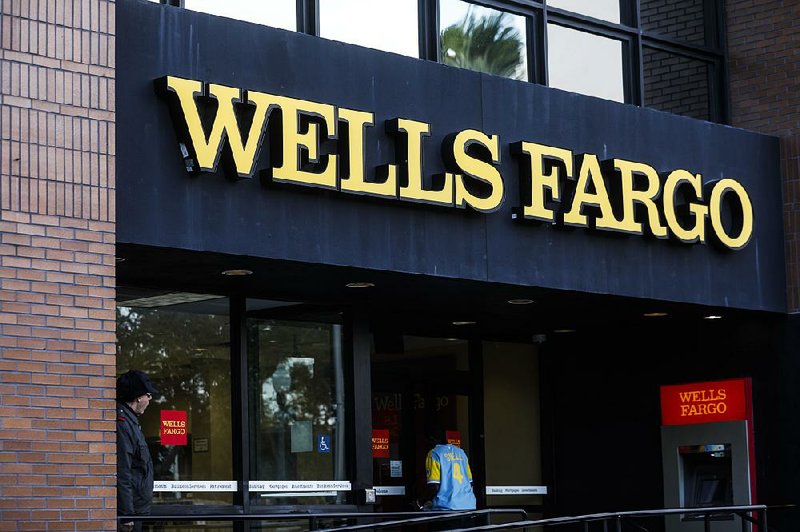As the chief executive of Wells Fargo & Co. gets set to tell lawmakers about the bank's efforts to move past its history of consumer abuses, a new report contends the San Francisco-based financial institution is backsliding.
Current and former employees said new customer-unfriendly sales incentives were replacing those eliminated after the bank's unauthorized-accounts scandal three years ago, according to a report released Monday by the Committee for Better Banks, an advocacy group.
"As far as pressure, it's still there," said Meggan Halvorson, 35, who works in Wells Fargo's private mortgage banking division in Minneapolis. She said she feels the constant push to get transactions "out the door."
"Honestly, it's perceived as a joke -- 'Oh yeah, they've changed things,'" she said of the bank's message of major improvements in how it treats employees. "I haven't met anybody, personally, who believes what they're saying or that it's the case."
Halvorson spoke to the Los Angeles Times and was quoted in the report, which was released before CEO Tim Sloan testifies today before the House Financial Services Committee at a hearing titled "Holding Megabanks Accountable: An Examination of Wells Fargo's Pattern of Consumer Abuses."
The panel's chairman, Rep. Maxine Waters, D-Calif., has been highly critical of Wells Fargo in the wake of the accounts scandal and other consumer abuses that led to the ouster of previous CEO John Stumpf. Those issues have cost the bank more than $1 billion in settlements with regulators and plaintiffs who have brought private lawsuits.
Wells Fargo spokesman Mark Folk disputed the message of the report, saying the bank has taken "decisive leadership actions" to change itself, adding that "any instances where we learn there may be inconsistency, we take immediate action."
Sloan is the first chief executive of a big bank whom Waters has summoned to appear before her committee since she took the gavel in January. Sloan also is likely to appear at a hearing by the committee this spring with chief executives of other large banks.
"We're focusing our attention on Wells Fargo because Wells Fargo has emerged with the kind of problems that lead everyone to wonder what is going on over there," Waters said in November.
She introduced legislation last year that would allow regulators to break up big banks that "repeatedly harm consumers." Waters has called Wells Fargo an example of the "recidivist financial institutions" that would be punished under the bill.
Wells Fargo's high-pressure sales practices were first reported by the Los Angeles Times in 2013 and were attributed to onerous sales goals. In 2016, the bank acknowledged that its employees had opened millions of checking, savings and credit card accounts that customers never authorized.
A year ago, Federal Reserve regulators ordered the bank to cap its growth until it could show it had improved its corporate governance.
In the bank's most recent earnings call, Sloan said he was "proud of the transformational changes" that Wells Fargo had made.
In 2017, the bank said it was overhauling the incentive-compensation system that was at the root of the unauthorized-accounts scandal.
The new incentive system would no longer reward branch employees simply for opening accounts, Wells Fargo said. Instead, workers would be judged on how often customers used their accounts and whether customers were satisfied with the bank's services.
But the bank "has not fixed its culture of fear and intimidation," according to the report by the Committee for Better Banks, composed of current and former employees of Wells Fargo and other banks, as well as labor unions and consumer and community groups.
"What we found is what seems to be a return to incentives and metrics where the pressure to sell is increasing," said Nick Weiner, a senior organizer with the group and one of the report's primary authors.
The report, citing interviews with tellers and call center workers, along with bank documents, says that the incentives and assessments in the retail banking division are geared toward how well workers hand off customers to other employees whose bonuses are tied to increasing loan volume and customer activity.
A new incentive that Wells Fargo put in place after the accounts scandal is supposed to reward the "customer experience" based on feedback from customer surveys. But the report says those bonuses are small and shrinking, while those for generating higher customer loan volume are rising.
The maximum amount of quarterly bonus pay this year linked to loan volume for one category of personal banker is $5,700, or 66 percent of total incentive compensation, the report says. In 2017, the maximum loan-volume bonus was $2,500, or 47 percent of total incentive compensation.
Meanwhile, the maximum bonus for "customer experience" this year is $875, or 10 percent of total incentive compensation, Weiner said. That is down from a maximum of $1,425, or 27 percent of total incentive compensation, in 2017.
Although tellers no longer have direct sales quotas, they are upset about being evaluated based on how well they engage in "conversation starters" with customers, the report said. Through prompts that appear on their computer screens, tellers are supposed to make customers aware of other bank products and services.
Business on 03/12/2019
